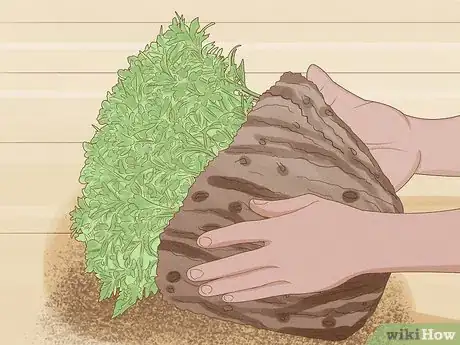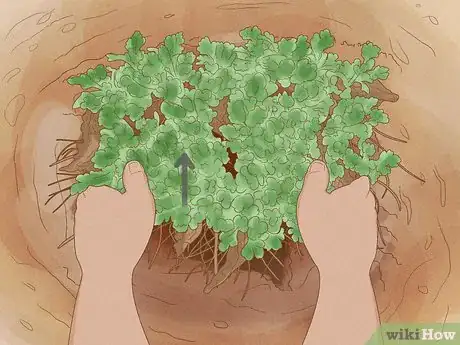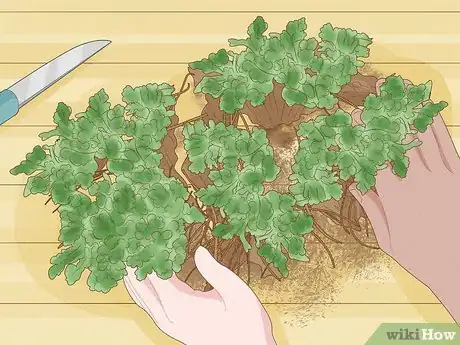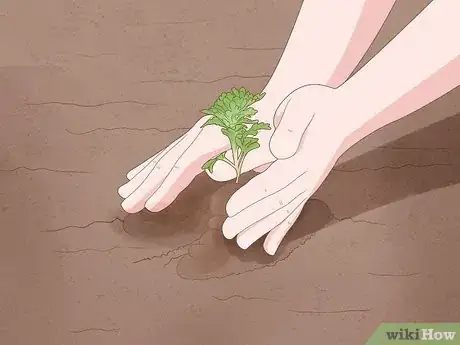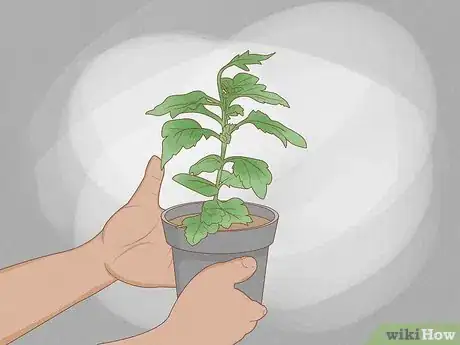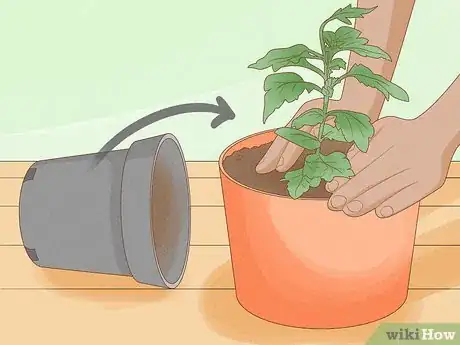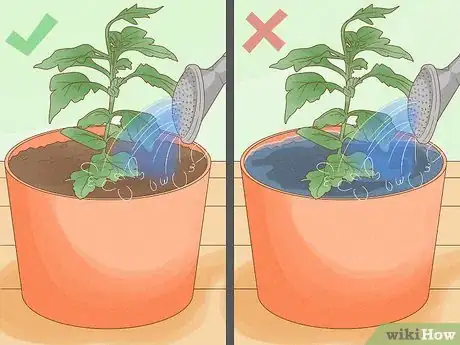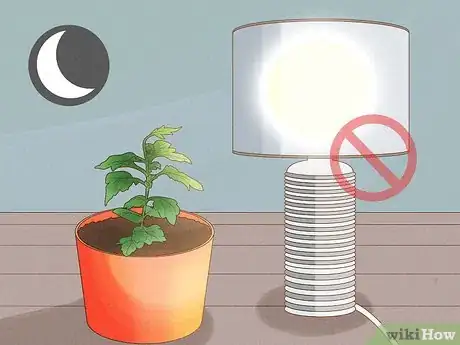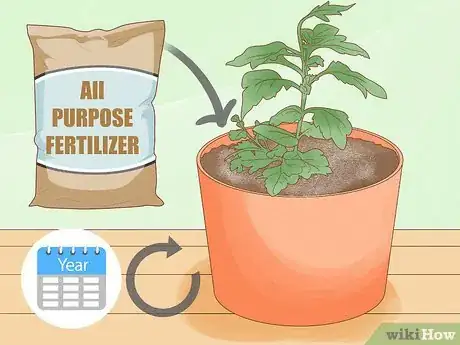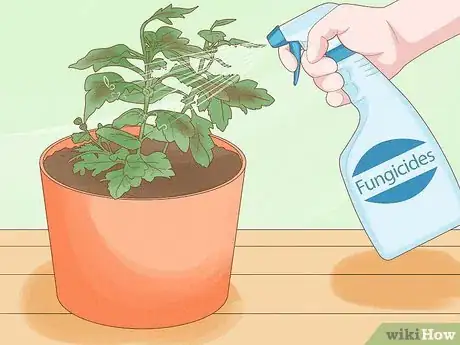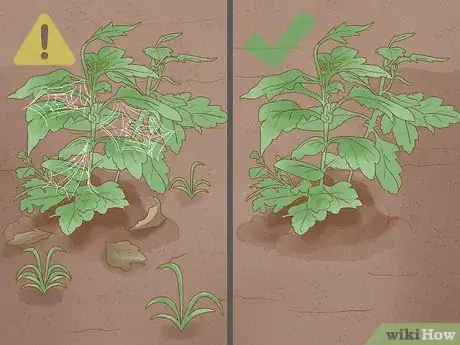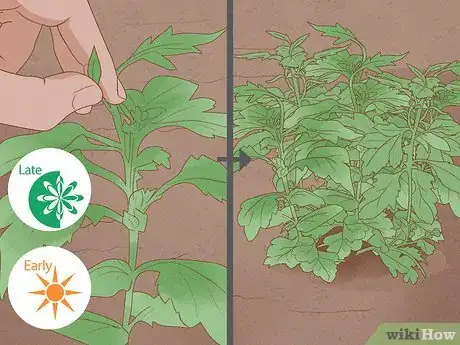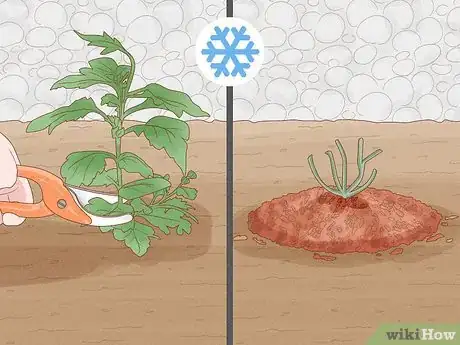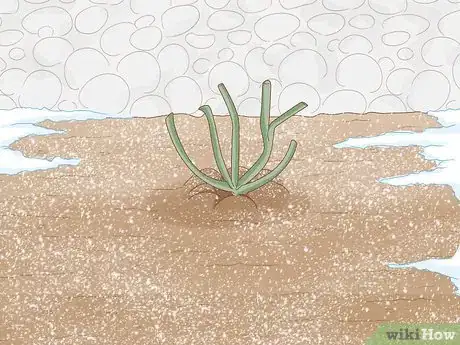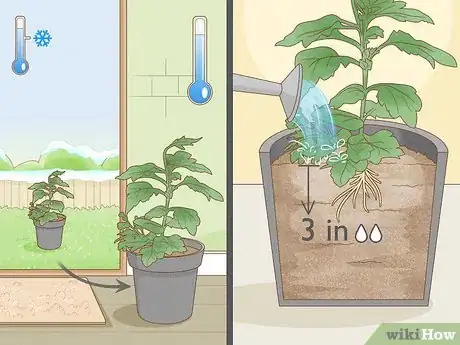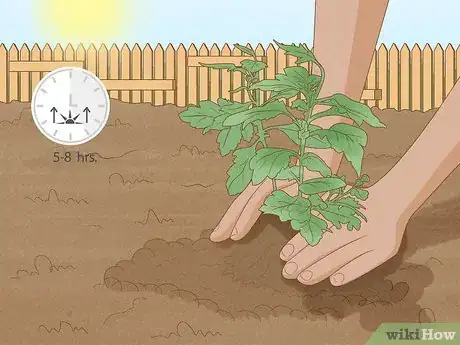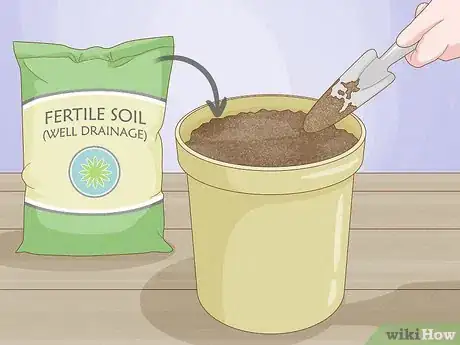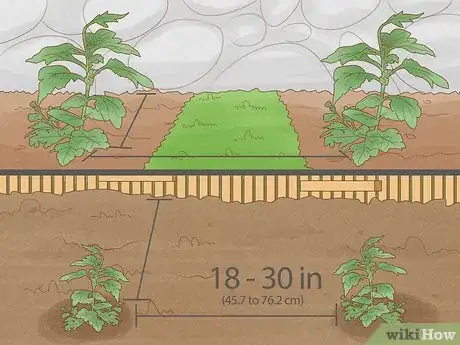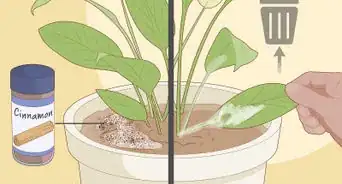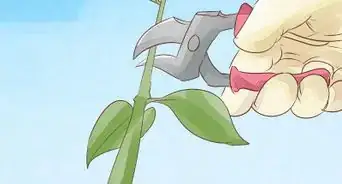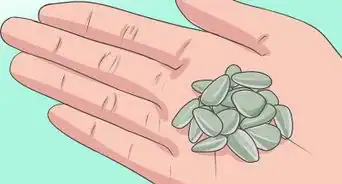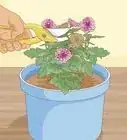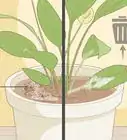This article was co-authored by Maggie Moran. Maggie Moran is a Professional Gardener in Pennsylvania.
wikiHow marks an article as reader-approved once it receives enough positive feedback. In this case, 100% of readers who voted found the article helpful, earning it our reader-approved status.
This article has been viewed 522,558 times.
Mums, or chrysanthemums, are a beautiful addition to any garden or home. These bright flowers are traditionally recognized by their colorful domes of vibrant yellow, burgundy, plum, white, pink or lavender blossoms that bloom profusely in the fall. Mums not only range in color but size and shape too. Learn how to plant and care for your own mums by following these steps.
Steps
Dividing and Transplanting Mums
-
1Divide your plants every three to five years. Dividing plants prevents overcrowding and promotes the maximum amount of blooms. Diving also cleans and rejuvenates old clumps. Dividing mums should be done in the spring when new growth first appears.[1]
-
2Dig your plant up, making certain that you are not harming the roots. Lift the plant from the hole once you have cleared it of the dirt. Shake any excess dirt from its roots. Remove any diseased or dead parts of the plant.Advertisement
-
3Divide the clump of roots by separating outer pieces from the center and then discarding the center of the plant. Some plants will be able to be separated with your fingers, others may need a knife--it depends on the size of your plant. Try not to damage the roots any more than necessary.
- Using a sharp garden knife will cause the least amount of damage to the roots, as it will be easier to cut them and there will be less hacking involved.
- Divide the plant further if you desire smaller plants.
-
4Replant the newly divided mums as soon as possible. They should be planted in well-drained, nutrient-rich, loose organic soil.
Caring for Mums
-
1Select a healthy plant. Mums are a popular plant in many areas so many stores may not know how to take care of them properly. Do not buy wilted plants or plants with yellowed leaves. To get the healthiest plants you may want to ask the retailer when they will be receiving their next delivery and return on that day.[2]
-
2Repot your mums. Mums that you intend to keep in containers usually need to be repotted in a slightly larger container with the addition of new soil for best results. Gently break up the roots if the plant is rootbound.
-
3Water mums sufficiently but don't allow them to stand in water. Mums’ root systems cannot handle too much moisture. Mums planted in containers will require more water than those planted in the ground, as mums in the ground can absorb natural water like rain and dew.[3]
- Don't allow mums to wilt between waterings. If the lower leaves wilt or turn brown you need to water them more. Avoid splashing water onto the foliage as this could promote the growth of bacteria or cause your mum to become diseased.
-
4Keep mums away from street lights or artificial light during the nighttime hours. Mums are short-day plants, which means they need a long period of darkness to flower.
-
5Fertilize mums several times a year. You should use a balanced all-purpose fertilizer. Feed them especially during the vegetative growth period to prevent premature flowering.
- At each watering use a 20-10-20 or equivalent solution. When the blooming season begins, switch to a 10-20-20 fertilizer or equivalent.
-
6Treat fungus with fungicides. Treat pythium root and stem rot, fusarium wilt, bacterial leaf spot, botrytis blight, and chrysanthemum white rust with natural fungicides like garlic oil, neem oil or sulfur.
-
7Keep the plant area clean and clear of plant debris to prevent pests and diseases. Abolish common mum insects like aphids, mites, thrips, and leaf miners with insecticidal soaps or horticultural oils.[4]
-
8Pinch the tips of young mum plants in late spring and early summer to make them bushy and compact. This ensures you will have domes of brightly-colored blossoms come autumn.[5]
- Pick off dead or fading flowers to encourage more blooms. This is known as "deadheading".
Caring for Mums in the Winter
-
1Cut your mums back to the ground. Do this after they have been killed back by hard frost. Provide an airy, light mulch for your mums. Insulated your plants’ roots with mulch will help them face the frost winter brings.[6]
- Evergreen branches or similar material are good mulch for mums.
-
2Mound the dirt up around your plants. Mounding the dirt will help to keep your plants from dying, even in the face of frost heaving (a constant freezing and thawing that can happen to plants in the winter.)[7]
-
3Prepare your potted plants for winter. If you have potted mums, move them to a well-lit but cool location. Remove any covering your might have put on the pot. Do not over water your potted plants, as this can lead to bacterial growth. Wait to water the plants until the soil has dried two to three inches deep. When you water your plants, fill the pots so that they overflow and water runs out of the hole in the bottom of the pot.
Planting Chrysanthemums Properly
-
1Plant or place mums in full sun. If you don't have an area that gets a full 8 hours of sunlight everyday, put them in a place where the mums will get at least 5 hours.
- If you have an option to choose between morning or afternoon sun, opt for morning sun.
-
2Use a fertile soil that drains easily when planting your mums in containers. Mums don’t do well with ‘wet feet’ so try to avoid soil that retains a lot of water.[8]
- For in-ground planting, choose an area of the yard that doesn't accumulate too much water.
-
3Plant mums in an area where they will receive plenty of air circulation. Placing them against walls or other structures, or placing them too close to other mum plants could hamper their growth or cause root competition. Mums should be planted 18 to 30 inches (45.7 to 76.2 cm) apart so that they have room to grow.
-
4Move them to a new location every three years. Moving your plants helps to prevent pest problems and reduces the risk of disease. (See the Dividing and Transplanting section for more instructions.)
Expert Q&A
-
QuestionHow do you care for mums in the winter?
 Maggie MoranMaggie Moran is a Professional Gardener in Pennsylvania.
Maggie MoranMaggie Moran is a Professional Gardener in Pennsylvania.
Home & Garden Specialist Start by insulating them at the end of the fall. Once the leaves die and are trimmed back, you cut the mums stems to 3-4 inches in length above the soil.
Start by insulating them at the end of the fall. Once the leaves die and are trimmed back, you cut the mums stems to 3-4 inches in length above the soil. -
QuestionDo mums come back if they're planted in pots?
 Maggie MoranMaggie Moran is a Professional Gardener in Pennsylvania.
Maggie MoranMaggie Moran is a Professional Gardener in Pennsylvania.
Home & Garden Specialist If planted early enough in the planting season they should have enough time to form a strong root system. This will allow them to come back again.
If planted early enough in the planting season they should have enough time to form a strong root system. This will allow them to come back again. -
QuestionHow much sun does a mum need?
 Maggie MoranMaggie Moran is a Professional Gardener in Pennsylvania.
Maggie MoranMaggie Moran is a Professional Gardener in Pennsylvania.
Home & Garden Specialist With the proper amount of moisture, mums will grow well in full sun (which is 6-8 hours per day).
With the proper amount of moisture, mums will grow well in full sun (which is 6-8 hours per day).
References
- ↑ http://www.thegardenhelper.com/chrysanthemum.htm
- ↑ https://www.gardeningknowhow.com/ornamental/flowers/chrysanthemum/growing-mums-in-containers.htm
- ↑ http://www.thegardenhelper.com/chrysanthemum.htm
- ↑ http://www.theflowerexpert.com/content/aboutflowers/tropicalflowers/chrysanthemum
- ↑ http://www.ipm.iastate.edu/ipm/hortnews/1996/5-17-1996/chrysanthemums.html
- ↑ http://www.ipm.iastate.edu/ipm/hortnews/1996/5-17-1996/chrysanthemums.html
- ↑ http://www.thegardenhelper.com/chrysanthemum.htm
- ↑ http://www.theflowerexpert.com/content/aboutflowers/tropicalflowers/chrysanthemum
- "Reader's Digest Organic Gardening for the 21st Century"; John Fedor; 2001
About This Article
To care for mums, water them often, but make sure any excess water drains from the soil so that the plant isn't standing in water. When you water the flowers, use a 20-10-20 fertilizer if they aren't blooming, or a 10-20-10 fertilizer if they are. Be sure to keep the area clear from weeds, and keep the flowers away from artificial light sources at night, since mums need a period of darkness to flower. In late spring and early summer, pick off dead and fading flowers to encourage more growth. In the winter, cut your mums nearly to the ground to protect them from frost. For tips on dividing and transplanting your mums, keep reading!
